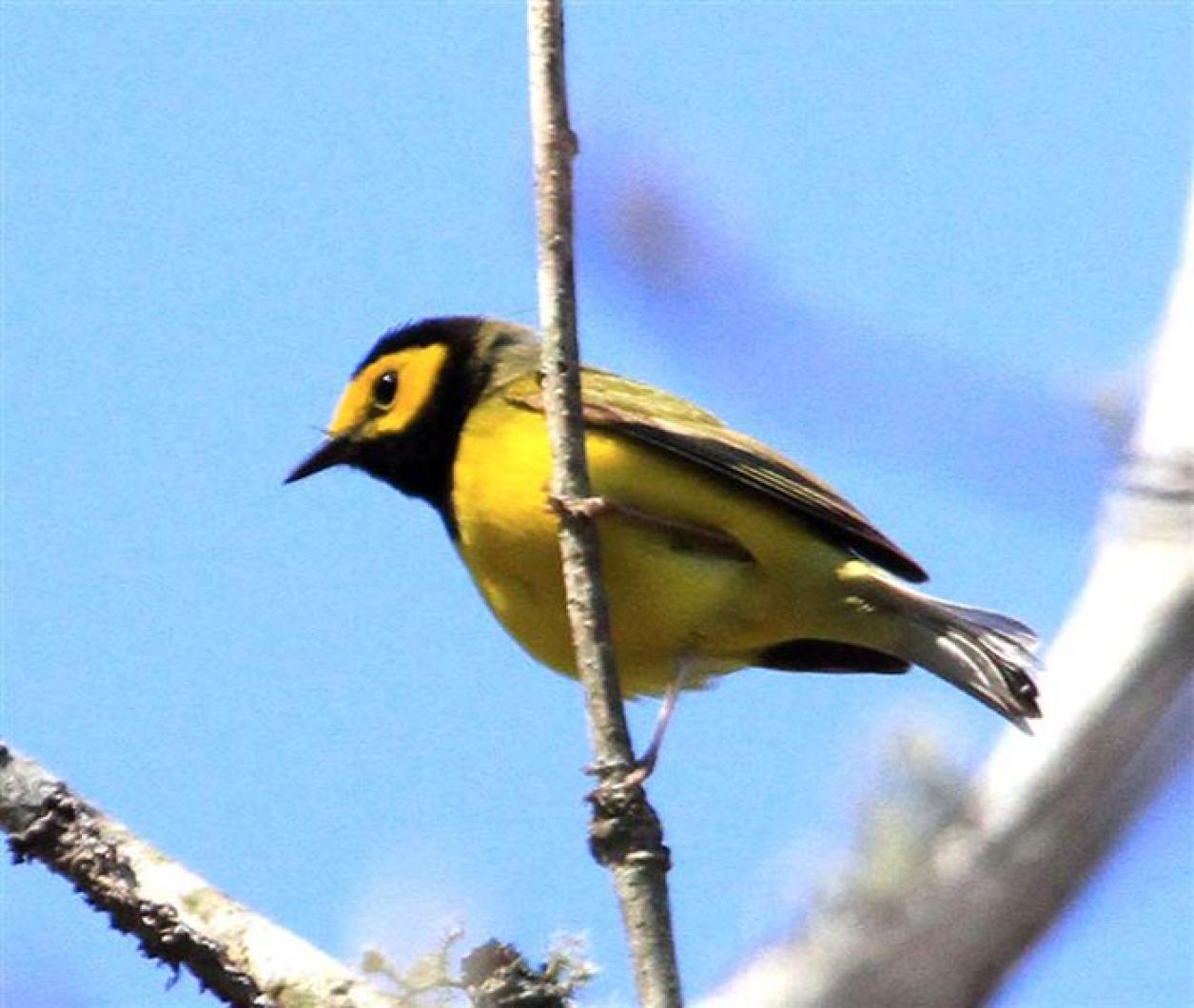One of the best ways to support conservation education on Martha’s Vineyard is about to happen just as you are reading this. The statewide Birdathon begins at 6 p.m. today and runs until the same hour tomorrow. A number of teams will fan out all over the state, but the one that matters to us is the Felix Neck team. Groups will search the Island to find as many species of birds as they can. Anyone can support their efforts by pledging a certain amount per species found. Last year a new record was set of 132 species, but if the weather is favorable we could do even better this year. Pledges can be any amount, from a nickel or dime per species to a dollar or so for those feeling generous. Any amount is welcome. And to make it easy, you can call Felix Neck at 508-627-4850 and leave your pledge, or even easier for many, go online to firstgiving.com/fundraiser/suzan-bellincampi/1/team and make your pledge there. This is a great way to support our own local Felix Neck Wildlife Sanctuary and its fine programs. Get involved. Give those field observers an incentive to work even harder. Call or go online today.
Weather on our Island out in the ocean surrounded by cold water can be frustrating for birders at this time of year. Spring migration is in full swing in the Connecticut River Valley, where the leaves are all out and temperatures have been warmer than here. Most resident birds have already begun nesting there. Here we have had little but cold northeast winds off the water for several days, so there is only a little evidence of migration. Most of our breeding residents have arrived, but not in their full numbers yet as far as I can tell. If the wind shifts to southwest and brings warmer temperatures, be on the lookout for a major fallout of birds arriving overnight.
Though the first ruby-throated hummingbirds were reported in the last week of April, some have returned only recently to places where they were last year. Robin Bray’s first arrived May 3 at Katama. And though some gray catbirds were found earlier, the first to reach Janet Sigler’s this year did not appear until May 3. Though barn and tree swallows have been present for a week or so, northern rough-winged and bank swallows seem to be late this year. My first bank swallow did not show up until May 3. A rough-wing arrived in Chilmark May 1, and Laurie Walker and Sally Anderson found some at the head of the Lagoon May 4, but those are all that have been reported so far. Laurie and Sally also found four black-crowned night herons and a rose-breasted grosbeak at the Lagoon and an oriole at East Chop on May 4.
There have been a few unusual birds to enliven a lackluster spring so far. Penny Uhlendorf and Scott Stephens had a glimpse of a red-headed woodpecker at the Phillips Preserve on May 4 and got a better view and a photo on May 9. At one time we had a small number of these handsome birds nesting here; it would be a fine thing if some returned. And Scott discovered a male hooded warbler at Waskosim’s Rock Preserve on May 6. Lanny McDowell got the fine photo of it that appears alongside this article the next day. It was still singing steadily on May 9. This is the second report of this species this year and it has occurred almost annually in spring in recent years. Because females do not sing we almost never see them, but they probably occur also from time to time; this is another handsome bird that could nest here in the future. Also for the second report for this year was a first year male summer tanager that visited Diane Emin’s suet feeder in West Tisbury on May 7 and 8. Diane did the right thing and took 18 photos of the bird which made it possible to be sure it was not a scarlet tanager. A tip to remember: Scarlet tanagers are almost entirely insectivorous but summer tanagers will regularly eat suet; summer tanagers also are very fond of bees so a tanager visiting a bee hive is almost certain to be a summer tanager.
Rob Culbert found a woodcock at Sheriff’s Meadow Sanctuary on May 7, and Andrea Hartman hosted her first visit from a purple finch on May 5. Until the house finches arrived, purple finches used to be common nesting birds here, but it is now confined to only a few spots in the state forest as a breeder. While there have been almost no reports so far of warbler species that nest farther north, one exception was a black-throated blue warbler seen on Chappaquiddick May 8 by Nancy Hugger. Rob Culbert also found the first least terns of the year on Lagoon Pond on May 7.
A call to the Bird Hotline (508-645-2913) from Rob Bierregard mentions that Luanne Johnson recently observed an osprey with a transmitter antenna. The battery in the transmitter is apparently dead since no signal is being emitted, and the identity of the bird is unknown. It could be one of the young birds fitted with a transmitter at Lobsterville in 2008, but that is not certain. Keep an eye out for this bird; it would be nice to be able to recapture it, identify it, and maybe replace the battery.
Lastly, don’t forget the Birdathon. Make that pledge today and watch for the results in next week’s Gazette.
Please report your bird sightings to the Martha’s Vineyard Bird Hotline at 508-645-2913 or e-mail to birds@mvgazette.com.
Allan Keith is a naturalist living in Chilmark. He and Steve Spongberg are coauthors of Island Life: a Catalogue of the Biodiversity on and around Martha’s Vineyard, the most complete description of the Vineyard’s wildlife to date, available at most book outlets.




Comments
Comment policy »